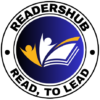Dyslexia, the most common type of learning disability, affects an estimated 5 to 17 percent of school-aged children in the United States, according to the International Dyslexia Association (IDA). The condition often makes it hard for these kids to decode and remember the written text, resulting in poor performance in reading comprehension, spelling, and writing skills—and that’s just in school! As someone who works with students on a daily basis, you can help dyslexic students overcome these challenges by following looking at these 7 ways to help students with dyslexia in the classroom.
1) Phonics-based reading programs
A phonics-based reading program is one of the best ways to help a student with dyslexia learn to read. This type of program teaches students the sound that each letter makes and how to blend those sounds together to form words. It is important to find a program that is specifically designed for students with dyslexia, as they often require a different approach than other students.
2) Guided Reading Programs
A guided reading program is a great way to help students with dyslexia in the classroom. This type of program provides structure and support for students as they read. It also allows them to work at their own pace, which can be helpful for students who struggle with reading.
3) Alternative Writing Systems
Many people with dyslexia find traditional writing systems difficult to use. However, there are a number of alternative writing systems that can be used to help these individuals. Some of these include • KANJI (Japanese)
• GLYPHICS (Egyptian)
• CONGRUENT (Chinese)
It is important for teachers to understand how students are experiencing difficulties so they can accommodate their needs accordingly.
4) Developmental Intervention
Developmental intervention is a process that helps children who are behind in their development catch up to their peers. It’s important to start intervention as early as possible because the brain is most plastic (able to change) during the first five years of life. Early intervention can make a big difference in a child’s outcome.
5) Word Mastery Centers
a) Create a word mastery center where students can work on building their vocabulary. This can be a physical space in the classroom or an online resource.
b) Make sure that the center is well-stocked with materials that are appropriate for students of all levels.
c) Encourage students to use the center as often as they need to, and provide plenty of opportunities for practice.
d) Use labels and visuals around the room so that students know which words to spell before they begin (for example, What letter goes here?).
e) Put reminders around the room like posters or sticky notes asking children to stop by the center before moving on to another activity (e.g., Visit your Word Mastery Center before you leave!).
f) Provide assistance with spelling if needed.
g) Monitor how much time each student spends at the Word Mastery Center by marking how many minutes they spend working on it each day.
6) Visual Strategies/Tutorials
Many students with dyslexia benefit from visual strategies and tutorials. Here are seven ways you can help students with dyslexia in the classroom -Use visuals: If a student is struggling with reading, use charts, graphs, or pictures for explanations.
-Label everything: Put labels on desks, shelves, cabinets, door knobs – anything you can think of! Label your items so that they are easy to find and read.
-Limit distractions: Reducing distractions will allow students who have difficulty focusing their attention on tasks at hand to have an easier time completing tasks.
-Allow for movement: Movements like handshakes or jumping jacks may help focus attention on the instruction being delivered by the teacher. For students who struggle staying seated for long periods of time, consider providing a balance ball chair or rocking chair.
7) Collaborative Learning
Collaborative learning is a great way to help students with dyslexia in the classroom. It allows them to work with their peers and get support from them when needed. It also helps them stay organized and on track. Plus, it can be a lot of fun!
Here are some tips for making collaborative learning work in your classroom -Have one or two children share a computer so they can take turns typing or reading aloud what they’re working on -It’s also helpful if you pair each student up with another classmate who has an easier time understanding what they are reading or writing. One student will read while the other takes notes or writes down ideas. You could even have one student speak out loud while another follows along in silence -Encourage all students to offer suggestions about how to solve problems or answer questions; this strategy often works best for those who struggle most with reading comprehension.
Conclusion
Definitely, there are more than 7 Ways to help students with dyslexia in the classroom. Have you handled any student with dyslexia before? If yes, please, share your experience with us. Thanks.


As a teacher and administrator, I would recommend that every teacher and school administrators take out time to learn about this disability, seek a way to help individual child with this deficiency.
Teachers should spend more time with children in this category.
The teacher and school administrators should not allow other students and colleagues to look down on them.
If possible, a special program should be rolled out for them to make them feel loved and cared for.
The society should help them see potentials in them.
Helping children with dyslexia or dyscalculia (a learning disability in math, where children have challenges with key simple concepts and basic maths problem) ; should begin with identification of children with such learning disabilities at early stage or at the point of admission into school.
According to studies, these learning disabilities, among others, are there among children, thus, it is imperative for all stakeholders to make adequate arrangements in first identifying and assigned specialist to help affected children as early as possible.
For example, each school should have a specialist drafted into their admission team/group to help identify such challenges at the point of entry. While, a follow up and intervention plan are being put in place to help the affected children in overcoming these and other learning disabilities.
Helping children with dyslexia or dyscalculia (a learning disability in math, where children have challenges with key simple concepts and basic maths problem) ; should begin with identification of children with such learning disabilities at early stage or at the point of admission into school.
According to studies, these learning disabilities, among others, are there among children, thus, it is imperative for all stakeholders to make adequate arrangements in first identifying and assigned specialist to help affected children as early as possible.
For example, each school should have a specialist drafted into their admission team/group to help identify such challenges at the point of entry. While, a follow up and intervention plan are being put in place to help the affected children in overcoming these and other learning disabilities.
You are right Mr. Matthew, I think the failure of educators to identify children with such learning disabilities is a big problem. Whenever we noticed that a student is not doing well in class, we are quick to jump to a conclusion that such a child is lazy or not serious. I think schools should try to conduct Standardized Tests at the start and the end of each academic year to check the academic progress of students.
As a teacher its our 1st priority to help these students.
There are many ways to help a person with dyslexia achieve success.
Allowing additional time to complete tasks.
Explicit instruction in reading and spelling using a structured synthetics phonics program.
Using assistive technology to read text aloud (for example, a C-pen reader or text to speech software)
Now, I understand the meaning of dyslexia and how to handle it.
Many thanks to the writer.
Thank you Mr. Okusanya for this beautiful topic. It is amazing and will help all teachers in teaching and learning